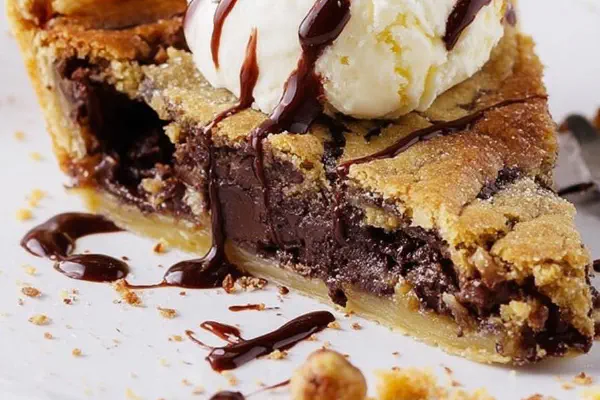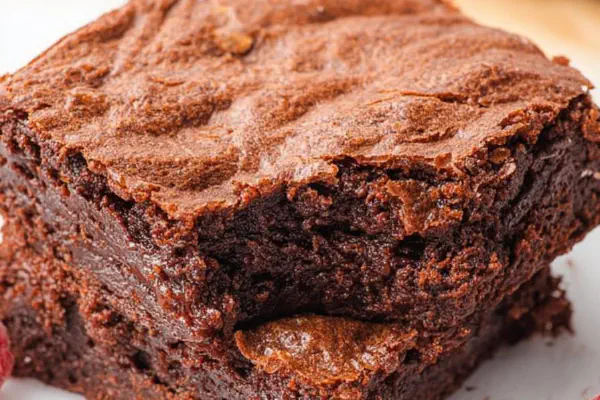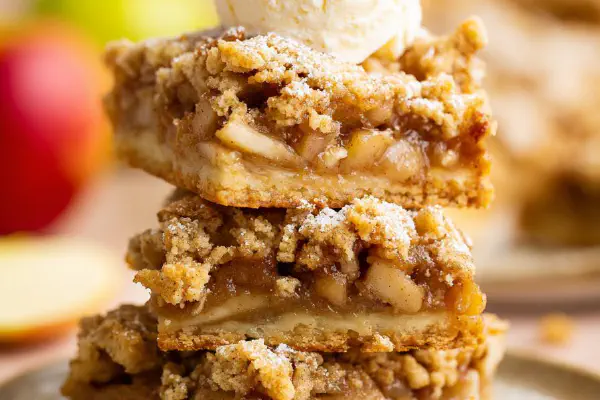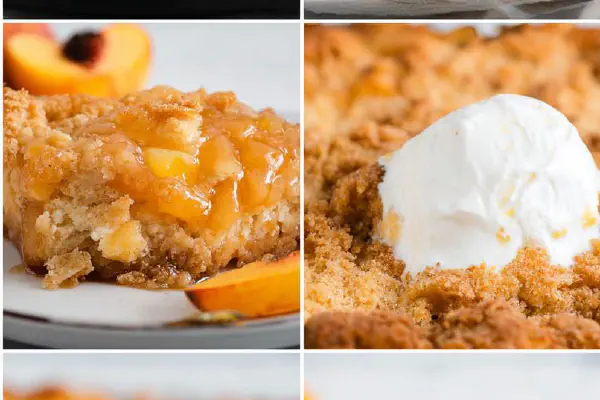Sunshine Orange Cake
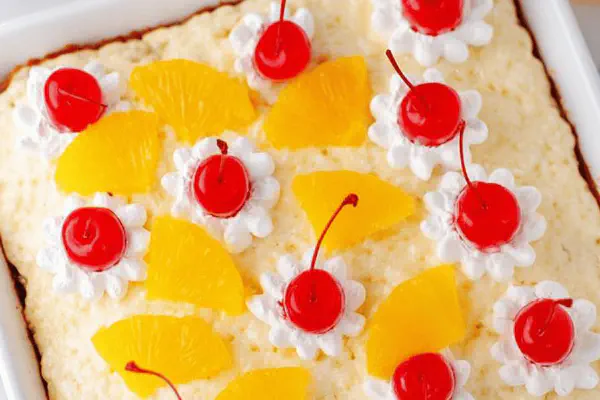
By Emma
Certified Culinary Professional
Ingredients
- 1 package yellow cake mix
- 1 cup freshly squeezed orange juice (about 2-3 oranges)
- 2 whole oranges segmented, reserve juice
- 3 large eggs
- 1/3 cup vegetable oil
- 1 teaspoon vanilla extract
- 1/2 teaspoon salt
- 1 cup cold heavy cream or prepared cool whip alternative
- 1 can (8oz) crushed pineapple drained mostly
- 1 small box instant vanilla pudding mix (4 serving size)
- Optional garnishes: pineapple chunks, maraschino cherries, orange slices
About the ingredients
Method
- Preheat oven to 355 degrees Fahrenheit. Spray 9 by 13 inch pan with oil spray or butter generously. Dry pan helps crust formation.
- In large bowl, whisk cake mix with eggs, oil, vanilla, salt. Add orange juice slowly while stirring to avoid lumps. Fold in orange segments gently. Batter should be loose but not watery.
- Pour batter evenly in pan. Tap pan lightly on counter to settle and remove bubbles.
- Place in oven middle rack. Bake 22 to 30 minutes watching for color changes—edges golden, center springs back softly. Toothpick comes out moist but no wet batter.
- Remove from oven. Let cool completely on wire rack 45-60 minutes. Patience here avoids soggy frosting.
- For topping, combine cold whipped cream, pudding powder, mostly drained crushed pineapple, vanilla extract in chilled bowl. Fold carefully until thick and spreadable. Chill if needed to firm up.
- Spread topping over cooled cake evenly. Garnish with fruit if desired. Serve cold or room temp. Leftovers refrigerate covered, best eaten within 3 days.
Cooking tips
Chef's notes
- 💡 Use fresh orange juice whenever possible but canned works with extra lemon splash; dry oranges need liquid help. Fold segments last. Avoid lumped pulp. Texture contrast hinges here. Batter should be shiny, thick but flow; watery means too much juice—add flour slow or bake longer. Watch oven hot spots; glass pans brown edges too fast. Lower temp or rack if needed to keep cake moist. Tapping pan before baking removes bubbles; crust forms better on dry pan. Visual cues beat clock numbers. Center that springs back gently, no batter on toothpick. Golden edges, slightly pulling from pan. Crucial.
- 💡 Cooling cake fully is key; warm cake traps condensation under topping, wrecks texture fast. Use wire rack, at least 45 minutes. Whip heavy cream or cool whip cold; chilled bowl gives better peaks. Fold pineapple gently, mostly drained but keep some juice for moisture. Overmixing breaks bubbles, dense topping follows. Vanilla extract rounds flavor. Salt balances sweetness; don’t skip. Pudding mix best instant but custard with gelatin or cornstarch is workable if pudding absent. Hold frosting in fridge if soft. Fruit garnishes boost visual appeal and texture but optional.
- 💡 Orange segments last to avoid breaking pulp, keeps bits intact for chewy pockets. Juice added slowly during mixing prevents lumps, keeps batter consistent. Batter consistency is best test for juice levels. Not runny but still loose. Holding back on last orange juice helps if too runny. Oil choice impacts flavor; vegetable neutral but coconut adds tropical note, olive oil subtle fruitiness. Experiment depending on cupboard. Pineapple drained more means less soggy. Left juice adds moisture in frosting. Balance here critical. Timing your bake depends on cues not strictly clock. Watch color, sniff aroma for caramelizing edges.
- 💡 Spray or butter pan well especially edges; sticky edges common setback. Dry pan helps crust texture. More air bubbles fail crust, tap pan before oven. Whisk well but no overbeating; shiny batter is forgiving sign. Folding in fruit slow, gentle prevents pulp into batter. Cooling cake before frosting saves topping from melt disaster. Runny topping = fridge time. Whip topping folds lightly. Store leftovers wrapped tightly, frosting could dry or absorb fridge odors fast. Three days max recommended. If pudding mix missing, thicken homemade custard with gelatin and vanilla for close texture. Frosting sets best chilled bowl.
- 💡 Watch batter like hawk; dull toothpick means underbaked, cracks/dryness overbaked. Oven not uniform; pan type matters. Glass browns faster, metal slower; adjust. Leaving some juice in pineapple keeps topping moist but too much soggy. Using cool whip saves time but fresh cream richer. Tried mango instead of pineapple once; moisture changes ruined crumb slightly—risky swap. Garnishes optional but brighten visually; cherries pop color best seen. Folding carefully keeps air in topping, break bubbles and dense mess ensues. Cake base soft with citrus twang, topping contrast. Let cool fully, take time.
Common questions
How to avoid soggy frosting?
Cool cake fully on wire rack. Warm cake traps condensation, melts topping. Pineapple must be mostly drained but some juice keeps frosting moist. Overmixed topping dense; fold fruit carefully. Chill bowl for whipping cream. Runs happen if skipped.
Substitutes for orange juice?
Fresh preferred; if canned, add lemon splash to brighten acidity. Dry oranges? Water or pineapple juice works to balance moisture. Avoid too much liquid or batter too runny. Adjust flour or bake longer if needed.
Cake too dry or dense?
Likely overbaked or too much flour added. Watch toothpick testing; center springs back means done. Baking time varies with oven/pan. Use visual cues—golden edges, springy center. Lower temp or check earlier if dry happens. Folding in fruit last keeps moist pockets.
Best storage method for leftovers?
Wrap cake tightly in plastic to keep topping moist. Refrigerate covered; topping dries fast without cover. Eat within 3 days. Room temp only if serving soon. Frosting holds better chilled. Leftover batter no good; bake fully.
